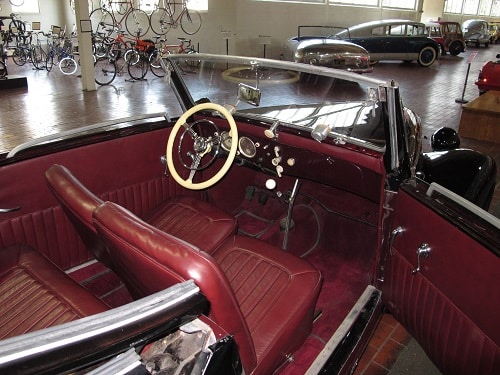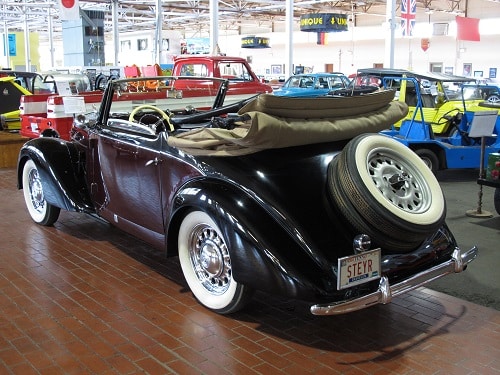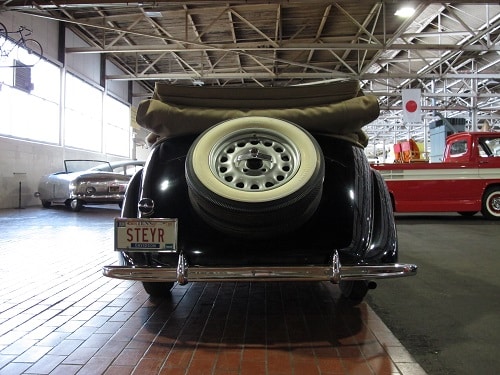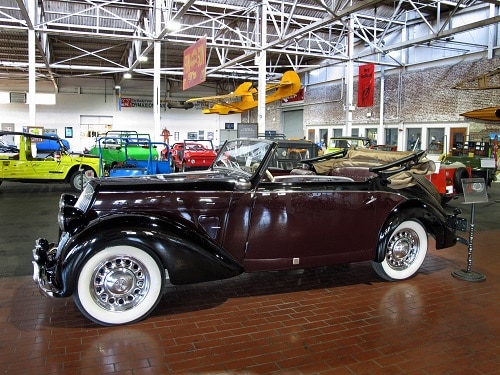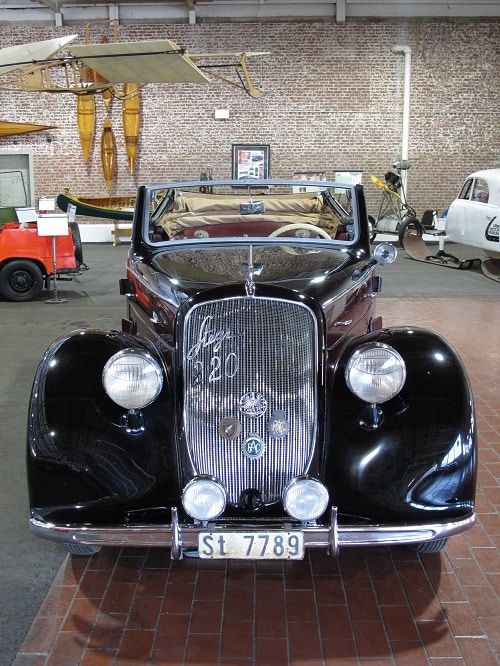
Steyr 220 Gläser Cabriolet- 1938
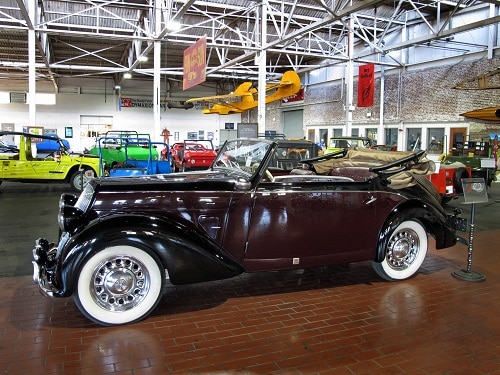
Austrian armaments manufacturer Steyr diversified into automobile production in 1915 and introduced the streamlined 120, the predecessor of this model, in 1935. The six-cylinder, 1385cc side-valve engine was replaced in 1937 with an overhead-valve 2260cc engine, and the 220 was born. The sleek, aerodynamic body was available in four body styles: five-passenger limousine, five-passenger cabriolet, and two different specially-bodied cabriolets, both by Gläser Coachworks of Dresden, Germany. The example seen here is a Gläser four-passenger cabriolet. The two-passenger roadster is very rare, with only six ever made; only two have survived. With 55hp and a four-speed transmission, all the 220s would have been considered high-performance cars in their day.A Steyr 220 was also involved in one of the few successful escapes from the Auschwitz concentration camp during World War II. Three Polish political prisoners and a Ukrainian mechanic managed to steal a few Nazi staff uniforms from the laundry room, as well as the camp commandant’s Steyr 220. Armed and disguised as Nazi officers, they drove up to the main gate, which didn’t immediately open. One of the prisoners happened to be dressed as an SS officer, and, although terrified, summoned the courage to bark a command at the guards. The guards proceeded to open the barrier, and the four men drove straight out of the camp, never to be recaptured.The example seen here has a unique link to Nashville’s country music legacy. It was owned by legendary songwriter, arranger, and record producer Billy Sherrill, equally famous for co-writing Tammy Wynette’s “Stand By Your Man” and for inventing the “Countrypolitan” sound. He acquired it from George Jones prior to Jones’s 1974 divorce from Wynette. Sherrill enjoyed this car for 40 years until his death in 2015. Sherrill’s widow Charlene graciously donated it to the museum in 2017.
Specifications:
Manufacturer: Steyr-Daimler-Puch AG/ body by Gläser
Country of Origin: Austria
Drivetrain Configuration: Front-engine, rear-wheel drive
Engine: Water-cooled, 2260cc, inline-six, 55bhp
Transmission: 4-speed manual
Top Speed: 75 mph
Years of Production: 1937-1941
Number Produced: 5,900
Original Cost: 7,850 Reichsmarks

